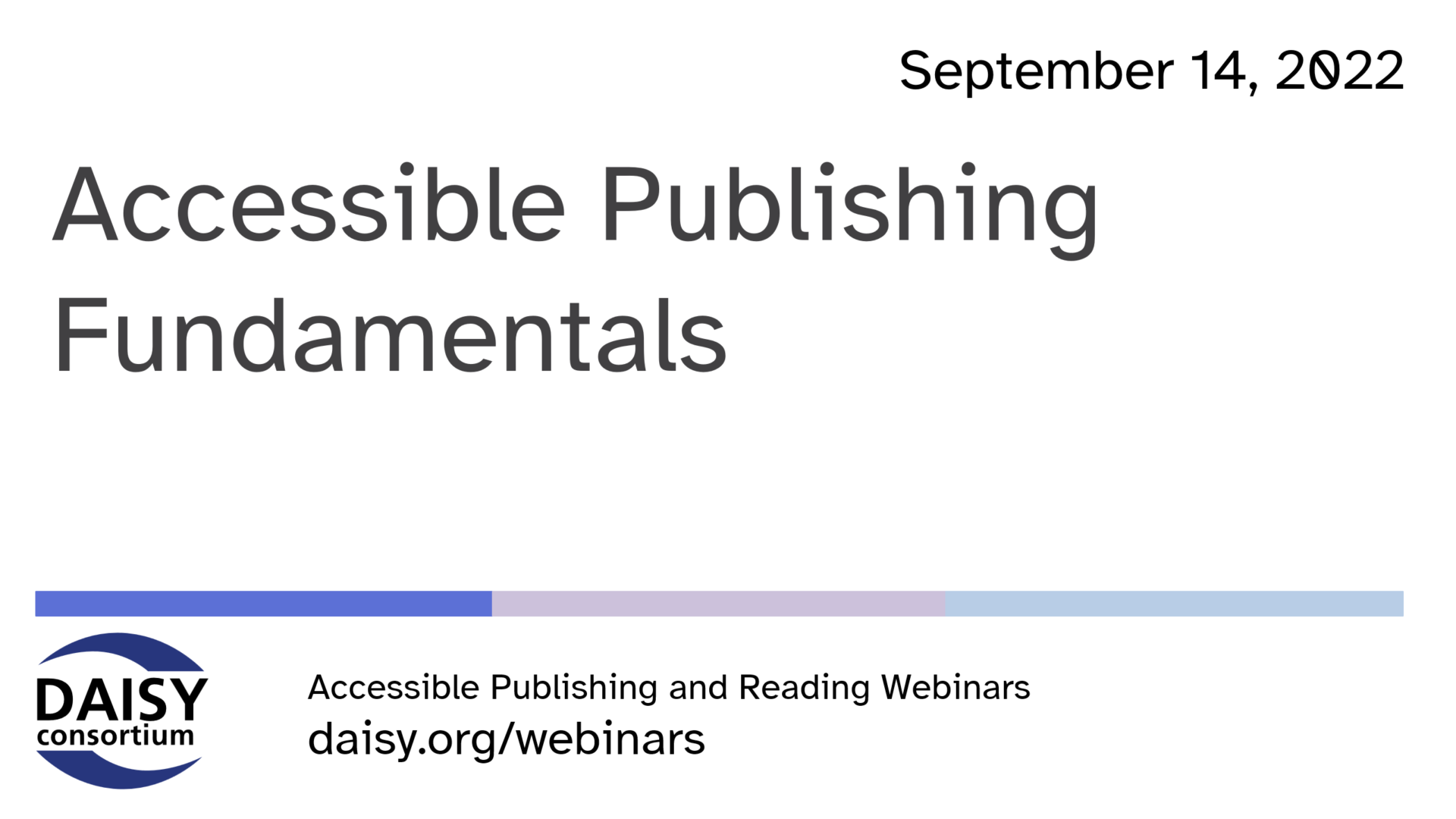Accessible Publishing: The Fundamentals (W)
 September 14th 2022 saw the first in a new season of free DAISY webinars with a session focused on Accessible Publishing: The Fundamentals. Accessible publishing is gaining increasing attention, with many new people approaching the topic, often driven by legislation like the EU Accessibility Act. This webinar went back to the fundamentals, highlighting how people with print disabilities can access digital publications, the importance of adopting accessible publishing practices, and the wider benefits to your publications.
September 14th 2022 saw the first in a new season of free DAISY webinars with a session focused on Accessible Publishing: The Fundamentals. Accessible publishing is gaining increasing attention, with many new people approaching the topic, often driven by legislation like the EU Accessibility Act. This webinar went back to the fundamentals, highlighting how people with print disabilities can access digital publications, the importance of adopting accessible publishing practices, and the wider benefits to your publications.
This page contains:
Full Video of the Webinar
Speakers
- James Taylor, International Publishers Association—Guest Host
- Gautier Chomel, EDRLab
- Prashant Verma, DAISY Consortium
- Brianna Walker, Taylor and Francis
Session Overview
Introduction to Accessible Publishing
Gautier Chomel reminded us that accessible publishing is big business and that digital content is a growing market. With changes in learning methods impacting this trend we can expect the growth to continue, particularly as legislation (such as The European Accessibility Act) impacts the supply chain and changes publishers’ perspectives. This session aims to give us a refresher for what we are all trying to achieve.
About Print Disability
Prashant Verma detailed exactly what a print disability is and how many people are affected by low vision, blindness, learning disabilities and developmental difficulties, all preventing access to printed material. Accessible digital content is revolutionary for readers with a print disability.
How Could People Read Your Publications?
It is well worth watching the video of this session for some examples of how people with print disabilities are able to read using accessible content. These demos and examples include:
- People with low vision tend to increase the text size and change the background color – Prashant pointed out that there are 240 million people worldwide with low vision.
- People who are blind use screen readers and/or electronic braille – all made possible by excellent navigation and accessibility features optimized within the content.
- People with learning difficulties can customize the text layout and use the read aloud function if they need to.
- Those with physical disabilities have a variety of options now available to them including switch or voice control technology
Accessible Digital Publishing Practices
Brianna Walker gave us the publisher perspective with some wonderful examples of good practice that has been adopted at Taylor and Francis by optimizing the features on offer within the EPUB 3 format. Brianna informed us of 4 top tips for good practice:
- Ensure text is text (and not images of text)
- Provide good structure
- Describe images
- Provide accessibility metadata
The Case For Accessible Publishing
The business case for accessible publishing is very often something that we have to advocate for in-house. Senior executives want to know that accessible publishing will help them to:
- reach more readers
- comply with the law
- meet purchasing requirements
- make better ebooks
- impact the supply chain
- promote their image
Where To Start
Brianna encouraged us all to consider a holistic approach when starting out by considering the bigger picture before focusing on what can be done in the short term and long term. It’s key to get commitment in-house and that investment needs to be on-going.
Patience is required but starting the journey is an instant win
Related Resources
- PowerPoint slide deck 26 MB
- Full transcript Word document 35 KB

